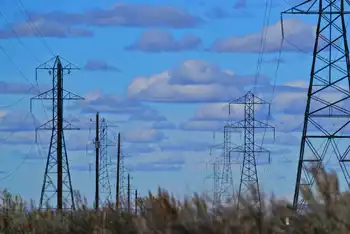A tale of two energy segments
For solar-panel maker Suntech Power (STP), it was a no-brainer: a 30% tax credit for renewable-energy manufacturing in President Obama's stimulus package.
"In the future, the U.S. will be the largest solar market," said Steven Chan, Suntech's chief strategy officer. He said building a plant close to American customers is more cost-effective than transporting heavy solar panels from China.
Up to now, Germany has been the biggest global solar market — close to 35% of total sales — because of heavy government subsidies. The U.S. only accounts for 5% to 7%, according to analysts.
But the U.S. may overtake Germany in just a few years thanks to growing demand from utilities and individuals, says Mark Bachman, an analyst at Pacific Crest Securities.
At the opposite end of the energy spectrum, coal stocks have also shown remarkable strength, despite a global recession that has dampened industrial production.
Both types of companies make up IBD's Energy-Other stock group, which is currently ranked No. 8 among IBD's 197 industry groups, up from No. 189 six months ago.
When coal miner Alpha Natural Resources (ANR) bought rival Foundation Coal (FCL) last month, coal-related stocks soared.
Consolidation is good for coal producers, says analyst Luther Lu of FBR Capital Markets. Now, Alpha, which generates nearly half of its revenue from coking coal used for making steel, has direct access to Foundation's energy-generating thermal coal.
Both solar companies and coal producers provide sources of electricity. Beyond that, the odd-couple pairing diverges widely.
Solar is a small, fast-growing industry that makes relatively expensive power supported by government incentives and consumer demand for clean, renewable energy.
Coal is a much larger but slow-growing business that makes inexpensive power under increasingly tight environmental rules.
Many solar companies make solar cells from polysilicon by using photovoltaic technology. The cells are combined into solar modules that convert energy from the sun into electricity.
Solar companies price panels by watt of generating capacity, similar to how grocers sell apples by the pound. The key in this business is to improve efficiency to make generating electricity cheaper.
To woo price-sensitive U.S. utilities, solar makers are racing to cut manufacturing costs.
Sunpower is known for its high conversion efficiency, the percentage of sunlight hitting the panels that is converted to useful energy. Sunpower's conversion rate is close to 23%, says UBS analyst Stephen Chin.
Rival First Solar (FSLR) has 10.9% efficiency, less than half of Sunpower's mark. But First Solar's "thin film" glass panels, made from a layer of cadmium telluride, have achieved the lowest cost in the industry at 93 cents per watt.
Even China's Yingli (YGE) couldn't break $1 in cost per watt in the same quarter, says analyst Kelly Dougherty of Macquarie Research.
First Solar aims to drop the cost of solar power to as little as 65 cents per watt by 2010-12 by expanding manufacturing facilities in Malaysia, where the company can make modules for 20 cents per watt less than it can at its Ohio operations, Dougherty says.
Polysilicon prices, a major component of solar panels, also play a big role in manufacturing costs. Oversupply has sent spot silicon prices down to about $80 per kilogram from last summer's peak of around $400. The lower silicon costs could escalate a price war in solar panels, analysts say.
Despite solar's growth, traditional coal still generates half of the electricity used in the U.S. It's cheap, plentiful and part of a well-establish energy infrastructure.
Of total domestic coal consumption, 90% goes toward generating electricity; 5% is used to make steel.
Peabody Energy (BTU), Arch Coal (ACI), Consol Energy (CNX) and Massey Energy (MEE) are in the top 10 U.S. producers.
Coal is highly susceptible to swings in the economy.
After several years of breakneck growth fueled by China and other developing economies, the recession has cut demand, especially for coking coal used in steel making.
Pressured by competition from natural gas, "the price of coal has bottomed out," said analyst Brian Yu of Citigroup. "The spot price is below the cost of production for the producers."
The spot price now hovers around $45-$50 per ton, vs. $140 per ton at last year's peak.
Coal used for steel making is more profitable than coal used in power plants. But coal resources are declining in the heavily mined Central Appalachian region, where most coking coal comes from, Yu says. Producers such as Massey Energy are also suffering from higher labor costs, analysts say.
Name Of The Game: Solar firms all over the world are racing to win contracts from big U.S. utilities. Cutting costs and improving panels' efficiency spur demand. For coal, the overall economy affects demand, and companies must adjust production capacity to avoid oversupply.
In solar, the top three markets are Germany, Spain and Japan, followed by the U.S. The Spanish market exploded in '08, but Spain began limiting government incentives this year, which is expected to slow growth.
The U.S. market had 1,600 megawatts of total installed electric capacity in 2008, according to the Solar Energy Industries Association.
"You've seen a lot of utilities doing major solar installations," said Jefferies & Co. analyst Paul Clegg.
PG&E, a big West Coast utility, signed an 800-megawatt solar power contract with Sunpower and Optisolar last August. The deal is expected to generate enough energy for 239,000 homes.
The federal government extended for eight years a tax credit that refunds 30% of the cost of new solar power systems. The measure also for the first time allows power utilities to claim the credit and scraps the old $2,000 credit cap.
Coal, meanwhile, keeps chugging along despite the global recession. U.S. coal producers provide 1.1 billion tons of coal a year.
The biggest U.S. coal producer, Peabody Energy, is aggressively expanding in the Asia-Pacific region to boost production and trading capacity of thermal coal in Asia. The firm sees China becoming a net coal importer of 10 million to 20 million tons this year, boosting demand.
Europe also relies on U.S. coal because Russia's coal producers have been busy meeting domestic demand for the country's booming steel industry.
An energy bill that would require U.S. utilities to supply about 15% of their electricity from renewable energy such as solar and wind by 2020 could have a huge impact on both major segments of the Energy-Other stock group.
If passed, it will be good news for solar companies but may hurt coal producers.
The Obama administration is also tightening scrutiny of mountaintop coal mining in southern West Virginia that critics say damages the environment.
"New mining permits in the area were hardly issued for the past two years," said FBR analyst Lu. While existing mines are running out of resources, the new policy makes it difficult to renew the permits, he says.
Still, investors are betting on a rebound in demand when the economy recovers and a long-term supply crunch as economies such as China and India industrialize.
As solar companies work to become more price-competitive with coal, coal producers are striving to become greener.
To cut solar-panel manufacturing costs, Suntech bought a German equipment automation company, hoping to adapt techniques used to make printed circuit boards.
"That is enabling us to tweak the process to minimize costs," said Suntech's Chan.
Suntech collaborated with the University of New South Wales in Australia to develop technology called Pluto that created higher-efficiency solar panels made with standard silicon wafers rather than the pricier ones used for highest-efficiency panels.
For the coal sector, developing cleaner coal-fired power plants is becoming crucial as governments tighten environmental standards.
A system called integrated gasification combined cycle, or IGCC, converts coal into a synthetic gas for fueling gas turbines. Duke Energy (DUK) is building an IGCC plant in Indiana. Analyst Yu says it's a proven technology, but commercializing it may take a few years.
Frost & Sullivan analyst Georgina Benedetti says the North American solar power market will grow 40% between now and 2015. She expects to see 6,000-megawatt projects for concentrating solar power systems in North America in the next three to five years.
The industry is racing to achieve "grid parity" — that is, solar power that costs the same as coal power. First Solar hopes to achieve grid parity as early as 2010.
Analyst Yu believes coal prices will remain depressed in 2009 but improve in 2010.
Upside: Price competition between solar firms can create megawatt level demands from price-sensitive utilities. Europe continues to rely on U.S. coal, and China could become a net importer.
Risks: Getting financing from banks for large-scale solar projects is difficult because of the recession. The coal industry depends heavily on the overall economy; a long recession would hurt.
Related News

Ukraine resumes electricity exports despite Russian attacks
KYIV - Ukraine began resuming electricity exports to European countries on Tuesday, its energy minister said, a dramatic turnaround from six months ago when fierce Russian bombardment of power stations plunged much of the country into darkness in a bid to demoralize the population.
The announcement by Energy Minister Herman Halushchenko that Ukraine was not only meeting domestic consumption demands but also ready to restart exports to its neighbors was a clear message that Moscow’s attempt to weaken Ukraine by targeting its infrastructure did not work.
Ukraine’s domestic energy demand is “100%” supplied, he told The Associated Press in an…




